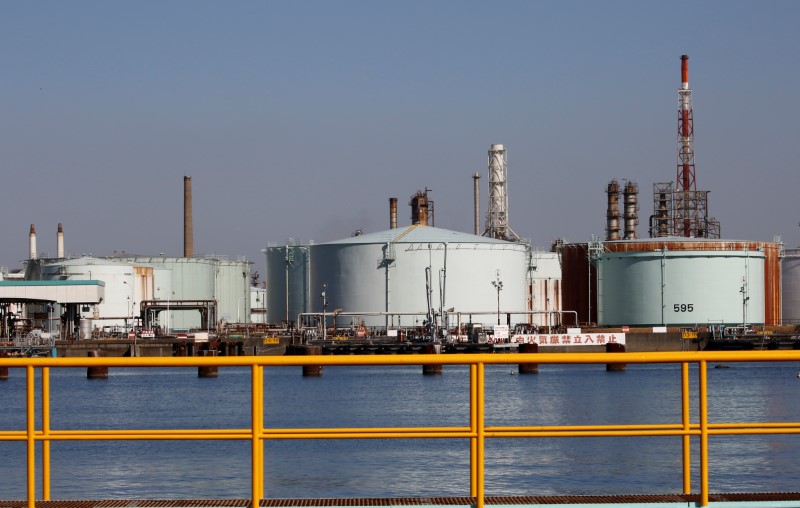Raytheon awarded $71 million in Navy contracts for missile systems
(Bloomberg) -- Everyone agrees that the novel coronavirus (Covid-19) that has shut down large parts of China’s industry and brought travel to a virtual halt in parts of the country will hit the world’s demand for oil hard. But the three big forecasting agencies are far apart on how severe that impact will be and what it means for 2020 oil balances.
The International Energy Agency, the U.S. Energy Information Administration and OPEC — the Organization of Petroleum Exporting Countries — have all slashed their forecasts for global oil demand in the first two quarters of 2020 in their monthly reports published this week. The severity of the reductions they made may reflect the points of view of the three agencies in the absence of hard evidence of an actual impact on demand.
It is no surprise that the IEA, representing the major oil consuming nations, sees the biggest impact on demand. Nor that OPEC — representative of the oil producers who are desperately trying to prop up prices through their words, if not yet their actions — sees the smallest effect. The EIA — representative of the country that is now both the world’s biggest oil consumer and also its largest producer — finds itself in the middle.
First-quarter global oil demand will now be 1.3 million barrels a day lower than thought a month ago, according to the IEA. That cut is three times as big as the impact seen by OPEC, and is deep enough to tip the world into its first year-on-year drop in demand in a decade, the IEA says. China’s oil consumption this quarter is now forecast to be 940,000 barrels a day lower than the agency predicted a month ago and below the levels for the corresponding quarter both last year and in 2018. Year-on-year demand growth should return in the second quarter, the IEA says, but it will remain muted at 270,000 barrels a day, little more than half the increase seen a month ago.
OPEC appears not nearly so worried. The Covid-19 virus will reduce China’s first-quarter oil demand by just 160,000 barrels a day from last month’s estimate and consumption will still be up by 140,000 barrels a day over the same period in 2019, a comparison of the group’s January and February reports shows. That view may be difficult to square with some of the data being monitored by BloombergNEF. China’s jet fuel use is now down by 240,000 barrels a day from pre-virus levels and roads remain empty despite the end of the extended Lunar New Year holiday.
Beyond the virus, some interesting patterns have emerged for global oil demand forecasts. Estimates for last year’s consumption and year-on-year growth are also being revised down. Again, the IEA and EIA are taking more bearish positions than OPEC.
Following the pattern set for all previous quarters of 2019, estimates of oil demand and year-on-year growth in the final quarter are now being cut as hard data become available.
The IEA reduced its estimate of 2019 global oil demand by 110,000 barrels a day in this month’s report from where it pegged it in January. The biggest quarterly revision, of 230,000 barrels a day, was for the final three months of the year. Oil demand growth in the fourth quarter of 2019 is now seen at 1.72 million barrels a day — a figure that could fall further if the pattern set by previous periods is maintained.
The EIA has followed a similar path, cutting demand and growth estimates for every quarter of last year, with the reductions for the fourth quarter almost twice as big as those for any of the three earlier periods. Only OPEC saw things differently, reserving its downward revisions for the first and third quarters and leaving its assessments for the second and fourth unchanged. It is more optimistic about last year’s demand growth than either of the other two forecasters, although it too is seeing that growth dwindling and now pegs it at 920,000 barrels a day.
OPEC’s more positive view on oil demand leaves it as the only one of the big three international agencies expecting global stockpiles to be whittled down this year, assuming OPEC output remains unchanged from its January level of 28.86 million barrels a day reported by the group’s secondary sources.Almost all of Libya’s shipments of more than 1.1 million barrels a day were shut in around the middle of last month when forces loyal to warlord Khalifa Haftar forced the closure of the country’s oil export terminals, reducing its production by nearly 350,000 barrels a day as storage tanks were filled. If ports are not re-opened, most of the remaining 800,000 barrels a day of production will disappear this month, cutting the OPEC total (which still includes Ecuador in all three agencies’ reports) to little more than 28 million barrels a day — the lowest in more than a decade for the current members.
Even without the further drop in Libya’s production, OPEC sees global oil inventories being drawn down at an average rate of 440,000 barrels a day this year. That’s in stark contrast to the IEA and EIA, who both see them being built up by a similar amount.
However, it’s really the three agencies’ very different analyses of demand Covid-19’s demand hit that will determine if inventories are going to rise or fall later this year. Somebody will have adjustments to make.
